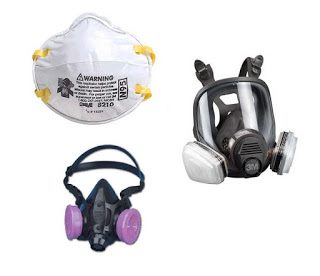Over the years, our office staff and trainers have come across a whole array of questions related to 3M mask fit testing. We have found that when our clients try to research this topic, there is not a lot of information available. So, we have compiled a detailed list of Respirator Mask Fit Testing FAQ’s.
Should you have any other questions that have not been addressed, please feel free to call our office at 905-672-3600. If we are missing a question you believe needs to be on this list of Respirator Mask Fit Testing FAQ’s , leave a comment or click here to let us know!
Respirator Mask Fit Testing FAQ’s:
1. Why is mask fit testing required?
Respirator mask fit testing is required in quite a few different fields of work. The most common field that requires fit testing is the medical sector. The reason being is if there is ever an outbreak of any sort, nurses and doctors should be able to grab a mask and go to work. They are exposed to a wide variety of viruses, sicknesses where masks help to protect them against anything that may be airborne.
In other fields of work, usually something construction related, mask fit tests are required to protect employees from dirt, dust, sand, toxic chemicals etc. Employees could experience serious health issues if they are exposed to contamination and do not have a way to properly protect themselves.
2. What is an N95 mask?
An N95 mask is a disposable mask. So, any type of mask that can be used for only one time is considered to be a N95 mask. This type of mask also must be CSA/NIOSH-approved and be clearly by the Food and Drug Administration (FDA) as a surgical mask.
3. What is the difference between Qualitative Fit Testing and Quantitative fit testing?
A Qualitative fit test is the most common type of test and covers most of the regularly used workplace masks such as N95, half face and full face respirators. The test involves the taste sensitivity of the person being tested and can be applied to any type of mask that does not have its own separate air supply.
The Quantitative fit test requires the use of a Portacount machine to measure the safety of the mask via the fixed air supply. It does not rely on the test sensitivity of a subject but rather it provides a fit factor safety measurement.
Both types of tests must be conducted at least every 2 years and should be done sooner if the wearer has gained weight, lost weight or has grown facial hair since their previous test. The tests can only be performed by a qualified instructor.
4. I need a mask fit test, what do I do?
The first step is to find out when your company is having a qualified trainer come to their location to conduct the test and sign up! If your company does not want to hire a trainer, get a group of your friends together, secure a location and book a session by calling 905-672-3600 or click here for more information.
5. Is there anything I need to do before I have my mask fit test?
Yes! There is no eating, smoking or drinking about 20 minutes before the test. When it is time for your test, you will be required to fill out a short medical form consenting to the fit test and after that the trainer will take care of the rest. Unfortunately if you have any facial hair you will have to shave. This is because when you have facial hair the N95 mask cannot properly secure to the skin on your face and you will fail the test.
6. Can I have a fit test if I am pregnant?
Yes, you can. The solution we use is a nontoxic and completely digestible. We currently use Bitrex FT-31 and FT-32. Click here to read the MSDS sheet for FT-31 or Click here to read the MSDS sheet for FT-32.
7. I lost my card! Help!
If your employer had us provide your mask fit testing, we should be able to reissue you a card for a small fee. As long as you know your company’s name and when the fit test was conducted (even an approximate date) we will be able track the original documentation and reissue a certificate based on the information found.
Just remember, your mask fit test card will expiry every 24 months. If your card has expired and it is lost, we will not be able to issue you a new card unless you get a current up to date fit test.
8. I was fit tested on one mask, but my company does not have a stock of it. What can I do?
If your company is out of stock of the type of masks you are fit tested to use, you cannot supplement one type with another. For example, if you are fit tested to wear a 3M 8210 and there is only 3M8110S, you will be unable to wear a mask because that other size might not fit you correctly. If you choose to wear the mask that you are not fit tested for, this could result in serious consequences.
9. What is the Canadian government regulation on Respirator Fit Testing?
Click here to be connected to the Ontario Ministry of Labour’s website where they explain all about Respirators and what you need to know. Click here to be connected with the Canadian Occupational Safety (The Safety Standard) website where they explain the legislation compliance.
We hope the Respirator Mask Fit Testing FAQ’s featured above has been helpful. If you need further information, please contact us at 905.672.3600.


